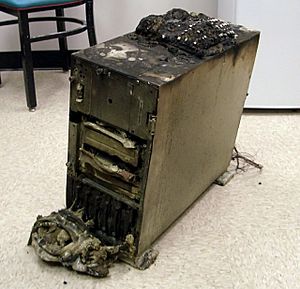Earlier this week, Amazon announced Glacier, which is long-term storage that costs one cent a gigabyte per month. This compares to the 12 cents a gigabyte per month for S3. The basic difference is that Glacier can take between 3 and 5 hours to retrieve data, and S3 is instantaneous.
“Amazon S3 is a durable, secure, simple, and fast storage service designed to make web-scale computing easier for developers. Use Amazon S3 if you need low latency or frequent access to your data. Use Amazon Glacier if low storage cost is paramount, your data is rarely retrieved, and data retrieval times of several hours are acceptable.”
But, let’s go to the pricing. As a home user, we’re assuming you have less than 50TB.
- Storage
- Glacier – 0.01 per GB/month
- S3 – 0.12 per GB/month
- Data Transfers In – Free on All
- Data Transfer Out -Â Glacier and S3 both use the same pricing.
- 1st GB free
- Next 10GB, 0.12 a GB
- Next 40GB, 0.09 a GB
- Requests
- Glacier
- Data Retrievals are Free, however, Glacier is designed with the expectation that retrievals are infrequent and unusual, and data will be stored for extended periods of time. You can retrieve up to 5% of your average monthly storage (pro-rated daily) for free each month.
- If you choose to retrieve more than this amount of data in a month, you are charged a retrieval fee starting at $0.01 per gigabyte. Learn more. In addition, there is a pro-rated charge of $0.03 per gigabyte for items deleted prior to 90 days
- Glacier
Amazon has promised that there will be an upcoming feature to export from S3 to Glacier based on data lifecycle policies. The details on how this will work aren’t 100% available, but we could imagine offloading from S3 to Glacier based on age. So, you keep the last 1-2 months of data on S3, and the older backups on Glacier. It would allow you to save a good deal of money for backups.
Not everyone, for that matter, needs high availability…especially if you are keeping something that is infrequently modified. For example, the family photo album. You can keep your local backups, and for 1 cent a month, you get a copy that you can access in an emergency.
What we’re missing is that many reports indicated that retrieval is potentially costly. But we found it equivalent to S3, only slower.
But, what would you use this for? We’d like to hear your thoughts.
Related articles
 Amazon Glacier May be the Hot Choice for Archival Data Storage(cloud.dzone.com)
Amazon Glacier May be the Hot Choice for Archival Data Storage(cloud.dzone.com)
 AWS Blog: Amazon Glacier: Archival Storage for One Penny Per GB Per Month(aws.typepad.com)
AWS Blog: Amazon Glacier: Archival Storage for One Penny Per GB Per Month(aws.typepad.com)
 Amazon Glacier Archives Your Important Data for a Penny per GB per Month [Backup](lifehacker.com)
Amazon Glacier Archives Your Important Data for a Penny per GB per Month [Backup](lifehacker.com)


